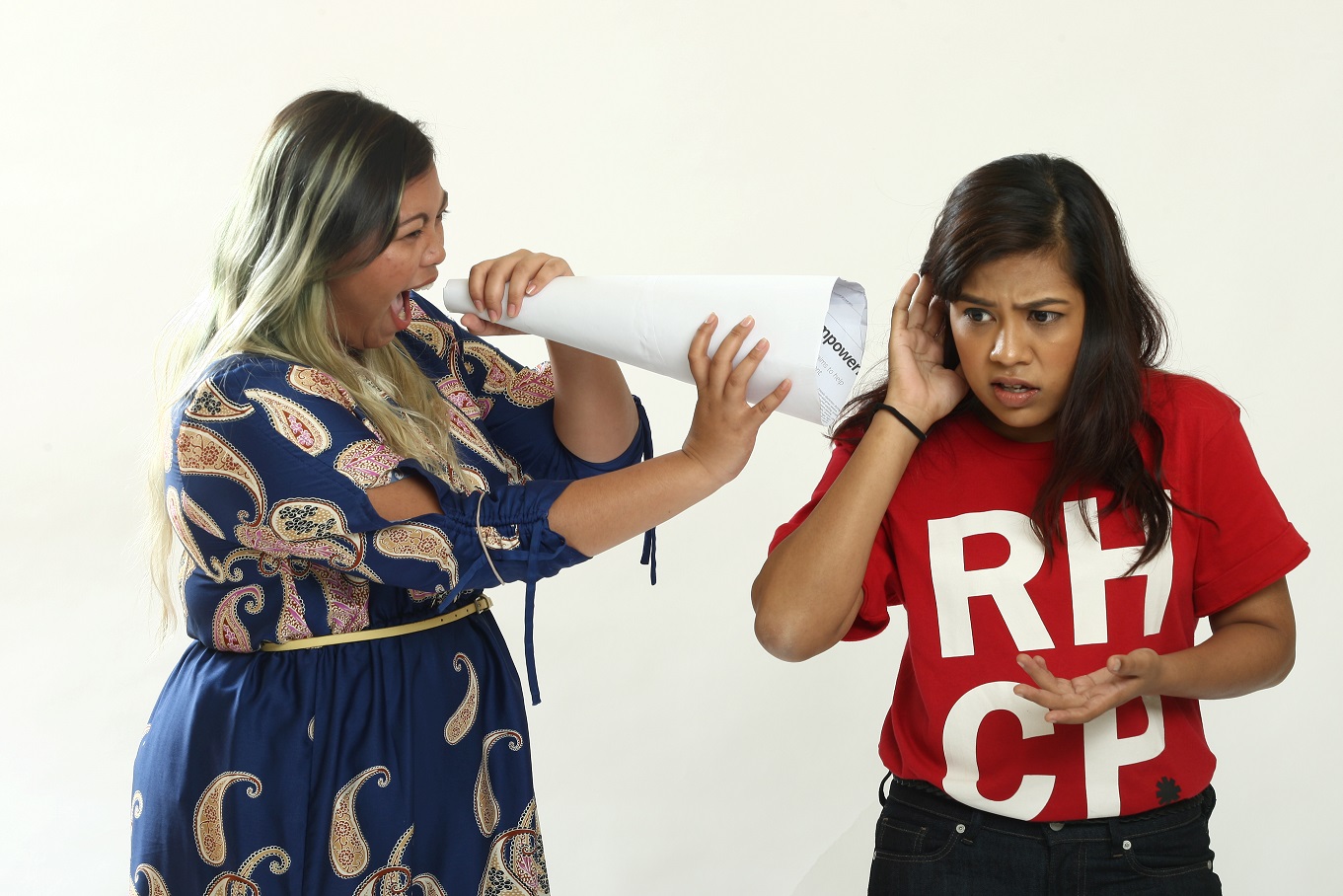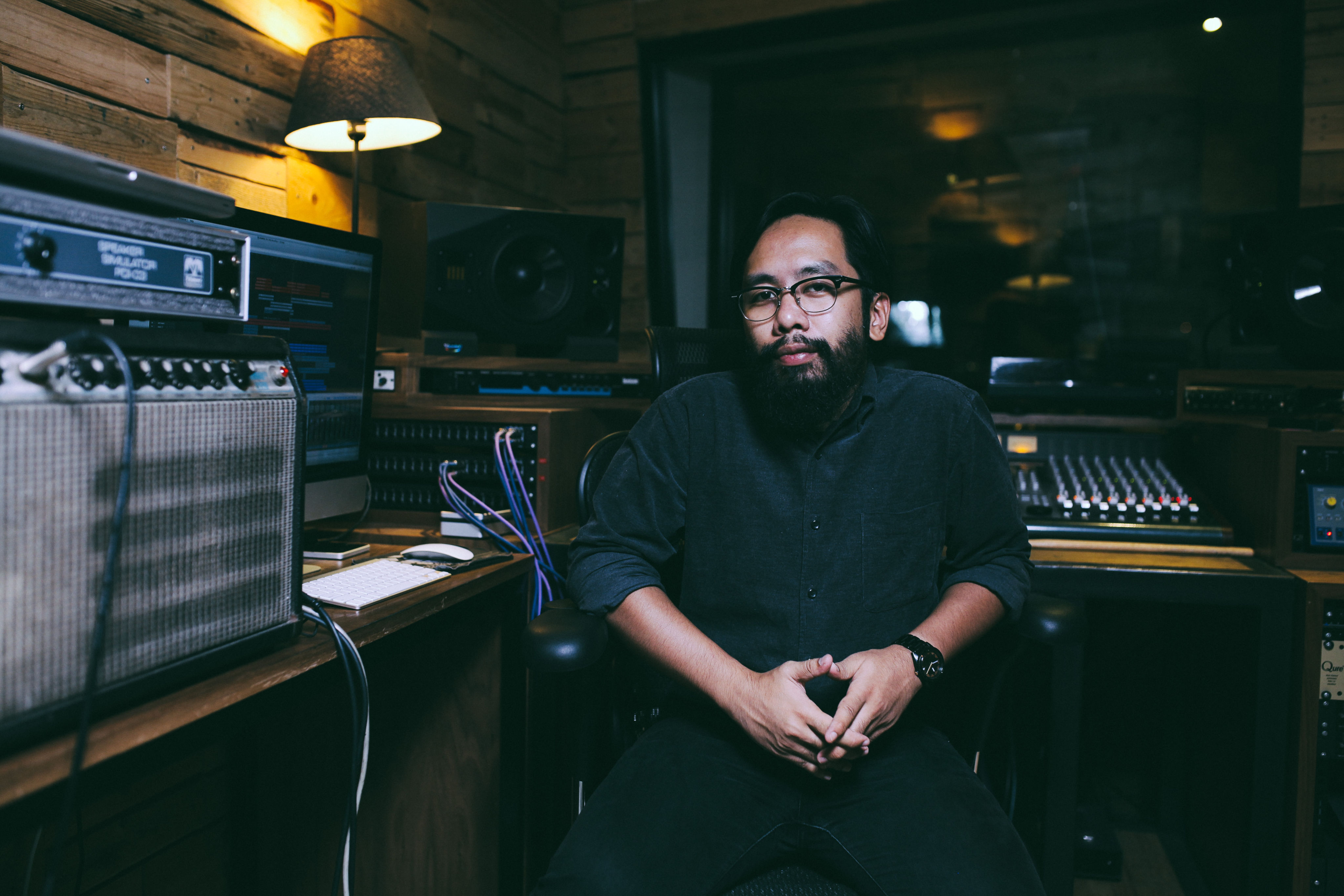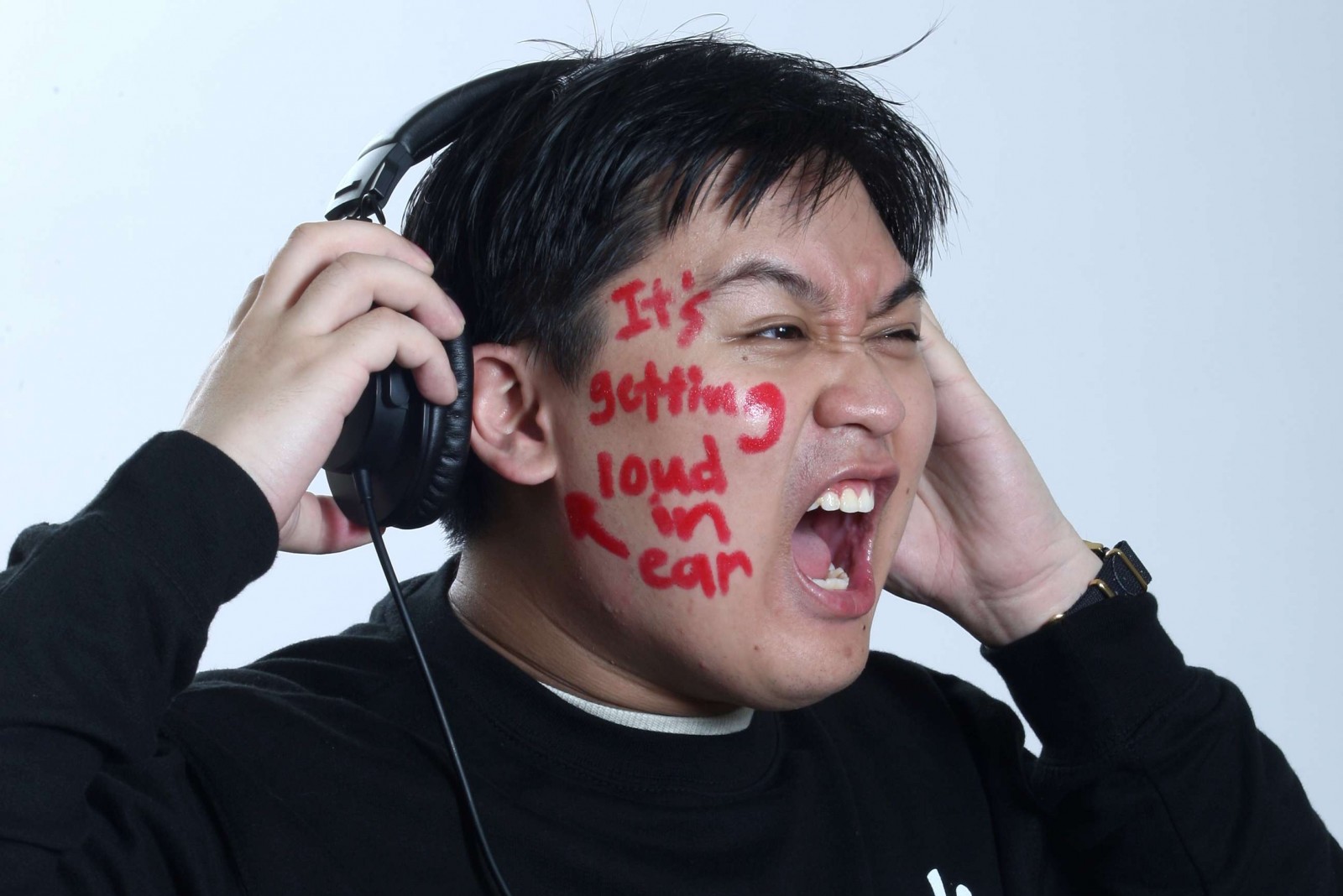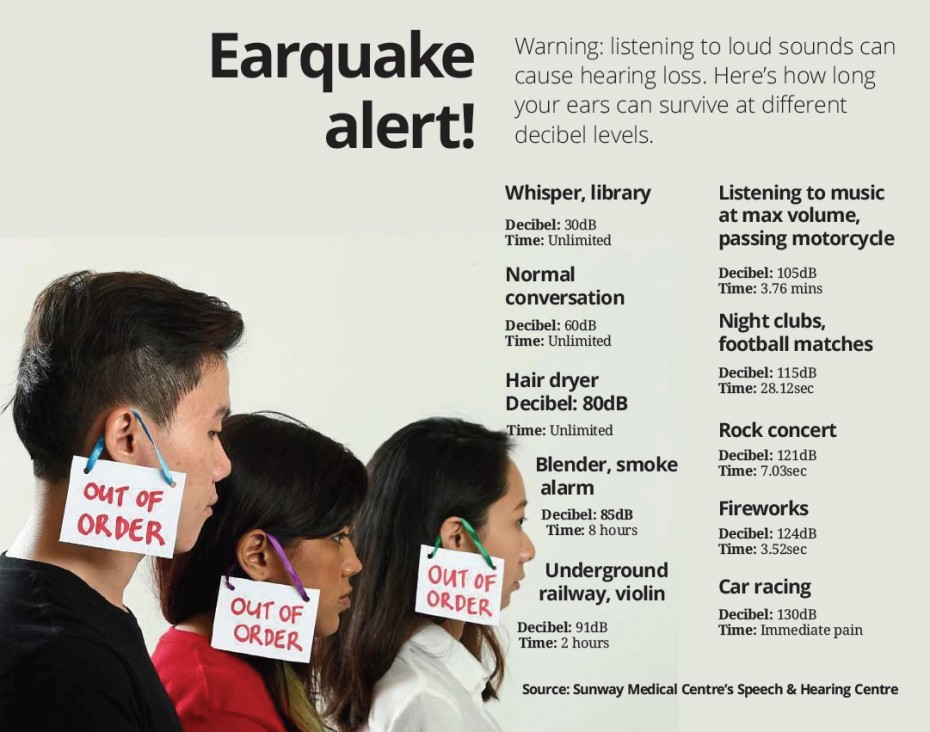By ABIRAMI DURAI and SHANJEEV REDDY
alltherage@thestar.com.my
YOUNG people and loud music are natural soulmates in the same way that Bonnie & Clyde were drawn to each other. While the attraction is mutual, the combination can be lethal.
In February this year, the World Health Organization released a report saying that 1.1 billion teenagers and young adults are at risk of hearing loss because of unsafe sound levels (read: ear-splittingly loud) from personal audio devices, clubs and concerts.
Chris (not his real name) is a 25-year-old who represents this growing statistic. A deejay and serial clubber, he is constantly exposed to loud music. Two weeks ago, Chris went to see an audiologist to get his hearing checked and got a bit of a shock: it turns out he already has mild noise-induced hearing loss in one ear.
Saravanan Selanduray, the senior audiologist and manager of Sunway Medical Centre’s Speech and Hearing Centre, said cases like Chris’ are becoming far more common. He now sees a higher number of patients aged 15 to 35 with hearing loss, compared to 10 years ago.
But just what exactly is noise-induced hearing loss and why are young people so susceptible to it?
Hear ye, hear ye
Noise-induced hearing loss can either be caused by prolonged, repeated exposure to unsafe sounds, or short exposure to excessively loud noise.
Unsafe sound levels are anything more than 85dB (the sound of a blender) for eight hours or 100dB (the sound of a passing motorcycle) for 15 minutes.
According to Dr Arasa Raj Sinnathuray, an ear, nose and throat (ENT) surgeon at Gleneagles Hospital Kuala Lumpur, hearing loss resulting from long-term exposure to loud sounds is irreversible, so you will never get back what you’ve lost.
This can happen if you listen to music on your earphones or headphones at maximum volume every day, or if you frequent clubs and concerts where loud music is the norm. The consequent hearing loss is permanent because the hair cells in the outer ear have died, and cannot be regenerated.

Noise-induced hearing loss incurred from prolonged exposure to loud sounds from earphones, headphones and clubs can cause irreversible, permanent hearing loss. The bottom line is, you’ll never get it back. Photo: RAYMOND OOI/ The Star
On the other hand, if you don’t normally listen to loud sounds, but are exposed to a situation where the speakers at a concert blow or fireworks explode right next to you, the ensuing noise-induced hearing loss might be reversible if you see an ENT specialist within 40 days.
Related story: How long can you (safely) stay at a rock concert?
How do you know if you have noise-induced hearing loss? Well, it primarily affects clarity and understanding of speech, so if you say “Huh?” often, mishear what people around you are saying, or can’t follow a conversation when there’s noise in the background, then you might want to get your hearing checked.
Deaf-cibel levels
The crucial thing to remember with sound is that the louder it is, the shorter the duration that you can safely listen to it.
Basically, anything under 85dB is pretty safe for unlimited durations. Anything above that, the recommended listening time drops exponentially.
For example, at 91dB, your exposure should be two hours max, but at 109dB, you should be listening for 1.8 minutes tops!
What’s alarming is that very few young people are aware of these guidelines and even fewer are following them.
In fact, one of the biggest guilty parties in noise-induced hearing loss is earphones and headphones, which young people often listen to at deafening volumes for hours on end.
Chooi Li, 19, is a typical teenager who likes listening to pop music on her earphones two hours a day at the maximum volume.
This sound level works out to around 105dB – the equivalent of holding a chainsaw near you. At that volume, she should actually be listening for no more than 3.7 minutes a day!
Li said she “kinda knows” listening to loud music is harmful and does feel like her hearing has been compromised, especially because her parents now have to speak extra loud for her to hear them.

Chooi Li listens to loud music every day and thinks her hearing might have already deteriorated as friends and family have to speak loudly before she can understand them.
Saravanan stresses that teenagers and young adults constantly listening to loud music on their in-ear-devices are particularly at risk of noise-induced hearing loss, and could potentially face permanent hearing loss within six months.
“A lot of university students have in-ear devices and when they walk past, you can actually hear the music escaping from their ears, which is about 40 to 50db.
“The sound that is going in will definitely be much more than that, and that’s when things get dangerous,” he said.
Live entertainment
Then, there’s also the crazy loud music at most clubs, pubs, concerts, music festivals and sporting events, all of which are like magnets to young people, for whom a good night out is often a loud one.
In Malaysia, noise levels at clubs can be incredibly loud (up to 115dB, the same as a concert), which means partying it up every Friday night from 11pm to 3am could be putting your poor ears at risk. Why? Because when sound levels are at 115dB, you should only be there for 28 seconds!
Reuben Samuel, a professional deejay who goes by the moniker DJ Blastique, says: “There are a lot of poorly tuned clubs Malaysia. And even if they’re set up properly in the beginning, DJs who think they’re sound engineers start tweaking with it and it ruins everything. Things get broken, sounds are sharp in the wrong areas and people get hurt.”
Faiz Rosli, a live sound engineer who has worked with top artistes including the likes of Yuna, said: “Most clubs and bars are bass heavy and volume levels are just way too loud. The management is more concerned with the levels not breaking the speakers, which can take a real beating, rather than customers’ safety.”

Most clubs have sound levels that go up to 115dB. Faiz says clubs in Malaysia are very bass heavy and volumes are off-the-charts loud.
So party-crazy young people could find themselves paying a heavy price down the road. In fact, according to a 2008 study by Australia’s National Acoustic Laboratories, young people who club weekly for 10 years will have the ears of someone 30 years older by their 30th birthday!
Hearing loss – not just for old people
Both Saravanan and Dr Arasa agree that young people should not be suffering from hearing loss at all, as it generally starts in your 60s. But now, exposure to loud sounds is causing accelerated wear-and-tear, so it’s no longer just a problem of the elderly. What’s more worrying is that most teenagers seem unconcerned about the whole thing.
Student Juli Woi, 18, who listens to loud music on her audio devices up to four hours a day, is unwilling to stop, even though she knows it’s bad.
“I know it’s dangerous, but I think I will continue doing it, because it has become a habit and it’s hard to break,” she said.
Saravanan thinks young people like Woi feel they are immune to hearing loss, because they think of it as something that only affects old people.
“Most teenagers are not thinking as far as 10 years into the future, but if you’re exposing yourself to loud sounds, there’s a high possibility that this is going to happen to you when you’re in your 30s, or even younger,” he said.

Woi listens to very loud music to take a break from reality. She knows it is harmful, but finds it hard to break the habit
Are you listening?
The only way to stop noise-induced hearing loss is to prevent it, which is why it’s important to monitor the sounds that surround you. Apps like Sound Meter can help track noise levels at clubs and bars, letting you know when sounds are dangerously high.
When you’re in a loud environment like a club, bar or concert, take plenty of breaks or leave if you have to. Don’t stand near the speakers and wear ear plugs if you can. If you don’t want to look like a dork in a club, Reuben recommends EarPeace, a trendy yet effective ear plug.
If you’re using in-ear devices, choose headphones (especially noise-cancelling ones) over earphones and apply the 60/60 rule – no more than 60% of the max volume for 60 minutes a day.
“Earphones are worse because they don’t block out outside sound, so you turn it up even louder, and the noise is fed directly into your ear canal. With headphones, they block out ambient noises so you can listen to music at lower volumes, and they’re not as close to your ears,” said Dr Arasa.
Red FM deejay Ezra Mei talks to our writers Abirami and Shanjeev about their story on why 1.1 billion young people today are at risk of hearing loss.








Tell us what you think!